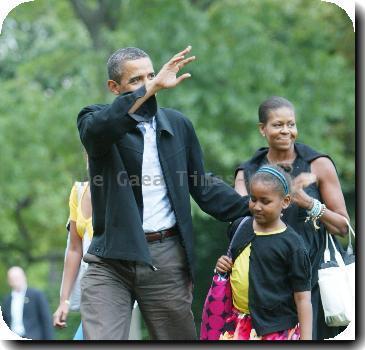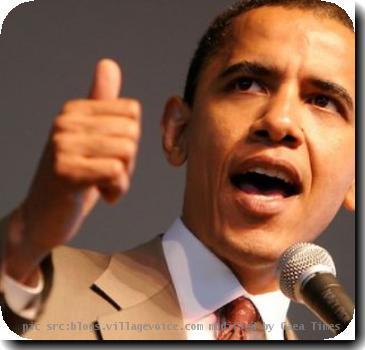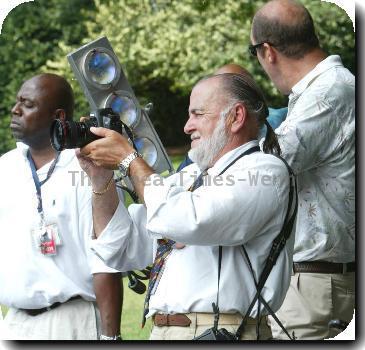Video of oil blasting from the floor of the Gulf draws viewers to TV, online coverage of spill
By David Bauder, APFriday, May 28, 2010
Arresting images of oil spill help drive story
NEW YORK — For many following the news, the Gulf oil spill was an important but abstract story — until live video became widely available showing plumes of oil gushing into the water at a furious pace, hour after hour and day after day.
The undersea images were first seen publicly late last week and television news networks have used it more as this week goes on. CNN and MSNBC executives debated internally whether to keep the feed constantly on the corner of their screens, much like they do with menacing maps of approaching hurricanes. On Thursday, the videos allowed experts and laymen alike to evaluate whether BP’s latest attempt to plug the leak by shooting mud into the well appeared to be working. It was hard to tell, but also hard to look away.
The video has become part of the story, and has increased the attention that news executives and news consumers are paying to the spill, said Bill Wolff, vice president of prime-time programming at MSNBC. The first pictures showed oil blackening the clear water around it like an out-of-control fire churning smoke into a clear sky.
“It’s an amazing, startling, shocking, arresting and upsetting picture that is impossible to ignore,” Wolff said.
PBS’ “Newshour” converted a video feed from BP to make it work on most Web browsers and has made that available for free. More than 3,000 websites have linked to it. On Thursday alone, more than one million people watched the video through that PBS feed, said Anne Bell, the show’s spokeswoman.
Subscribers to the “Newshour” channel on YouTube doubled in 24 hours, she said.
U.S. Rep. Ed Markey, the chairman of the Select Committee on Energy Independence and Global Warming, was instrumental in pushing BP PLC to make the video feed public. He said that has helped to pressure BP to work with more urgency to stop the leak and to own up to the magnitude of the spill. BP spokesman Graham MacEwen denied the pictures had anything to do with making the company work harder to plug the flow of oil.
BP didn’t make the video available until more than three weeks after the spill. President Barack Obama said Thursday his administration sought the release, but “should have pushed them sooner.”
The company has up to a dozen camera views available from near the leak, with the help of undersea vehicles positioned there. The company’s primary concern was to use the images to evaluate what should be done to stop the leak, MacEwen said.
“I don’t think it was a case of us trying to cover it up,” he said.
Markey’s office became aware of the underseas footage through a snippet posted on YouTube that had apparently been provided by BP to government authorities. The first video was publicly released by BP after Markey sent the company a letter May 19.
At the same time, CNN was trying with little success to get its own pictures of the spill, said Nancy Lane, senior vice president of editorial for CNN U.S.
Undersea rovers rented by the news organization were prevented by the U.S. Coast Guard from getting close enough for a good view, she said. CNN was able to get close enough to see damage done to coral reefs by the oil, she said.
“Somebody needed to be the eyes and ears somewhat independent of the story to make a judgment about what is really going on there,” Lane said. “We kept pressing for access and we keep pressing for access.”
With television news organizations restricted to showing the after-effects of the spill, Lane said CNN sensed viewers were starting to lose interest in the story.
That has quickly changed. The New York Times’ Maureen Dowd called it the “plume of doom — a symbol of national impotence.”
While BP made one camera view of the leak widely available to the public, more extensive views have been limited to congressional offices, prompting CNN to take cameras to these offices to record the images off their computers, she said.
BP also said on Tuesday that it would black out video during its latest fix effort this week, but backed down after protest from the Obama administration.
It’s easy to see why a company already suffering through a public relations crisis wouldn’t want these pictures out, said Dan Fagin, head of the environmental journalism program at New York University. The gusher is a powerful image that conveys what’s happening in a sense that pictures of oil near marshlands can’t, he said.
“While BP and environmentalists and oceanographers argue about how many gallons are leaking out, a regular viewer can look at this and say, ‘who cares? It’s a massive amount of oil and that’s all I really need to know,’” he said. “It makes the intangible tangible.”
Tags: Accidents, Arrests, Barack Obama, Environmental Concerns, New York, North America, Oil spill, United States, Youtube





